Chicken Anatomical Poster
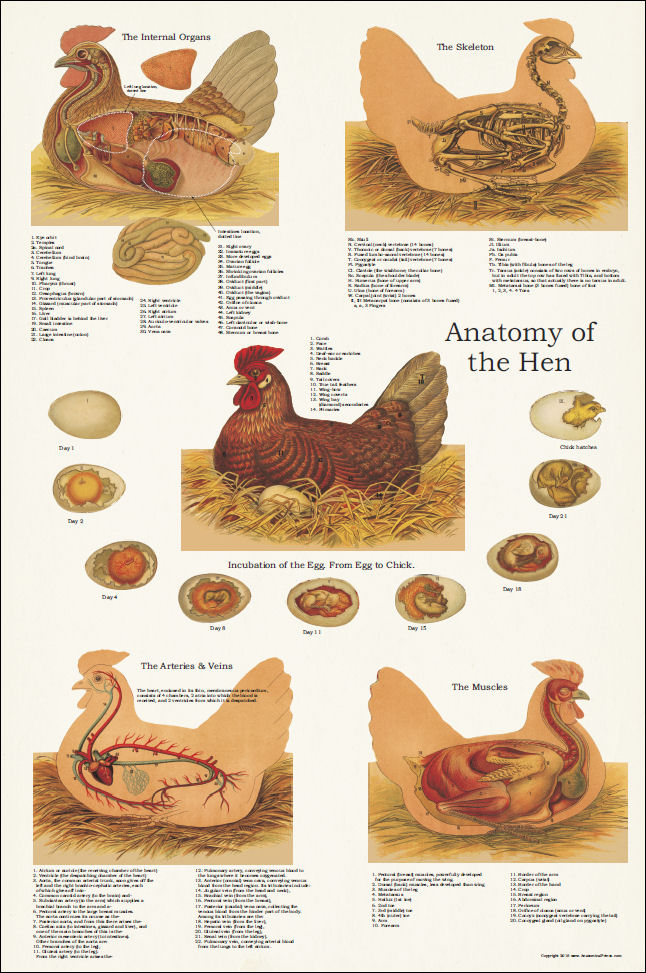
Chicken Anatomical Poster
Giblets refers to the little bundle of parts sometimes found inside the cavity of a bird, such as chicken or turkey. Usually the giblets includes the neck, the gizzard (a muscle that grinds up food before it enters the digestive system - think of it as a second stomach), the heart, and the liver. The bundle of giblets pictured above also had.

Mystery on the underside of chicken thighs? Seasoned Advice
The chicken has a typical avian digestive system. In chickens, the digestive tract (also referred to as the gastrointestinal tract or GI tract) begins at the mouth, includes several important organs, and ends at the cloaca. Figure 1 shows a chicken digestive tract, and Figure 2 shows the location of the digestive tract in the chicken's body.

A Chicken's Digestive System The Journey From Feed to Egg Backyard
All animals have three of types muscles: smooth, cardiac, and skeletal. Smooth muscle is controlled by the autonomic nervous system (ANS) and is found in the blood vessels, gizzard, intestines, and organs. The cardiac muscle is the specialized muscle of the heart. Skeletal muscle is the type of muscle responsible for the shape of the chicken.

chicken digestive health Chicken anatomy, Poultry, Chicken cages
A chicken's head has several parts, as shown in Figure 7. One of the most prominent features on a chicken's head is the comb. Figure 8 shows different types of combs. A chicken's comb and wattles are red, soft, and warm. Chickens do not have external ears as humans do. The ears are just openings into the ear canal, and each is protected.

Chicken Anatomy Internal Organs of Hen (A link to Everything that has
The glandular stomach of a chicken is an elongated, spindle-shaped organ that directs craniocaudally. It extends from the fourth thoracic vertebrae to the seventh thoracic vertebrae. This glandular part of the chicken stomach is the continuation of the esophagus without a clear anatomical boundary.

Chicken Internal Anatomical Chart
The easiest anatomy of the chicken to assess is the external anatomy. This is the plumage and various appendages that can be seen without any further investigation necessary. This includes the plumage, legs, beak, comb, wattles, eyes, toes, tongue, mouth and skin. . Diagram 1 shows the external anatomy of a mature rooster .
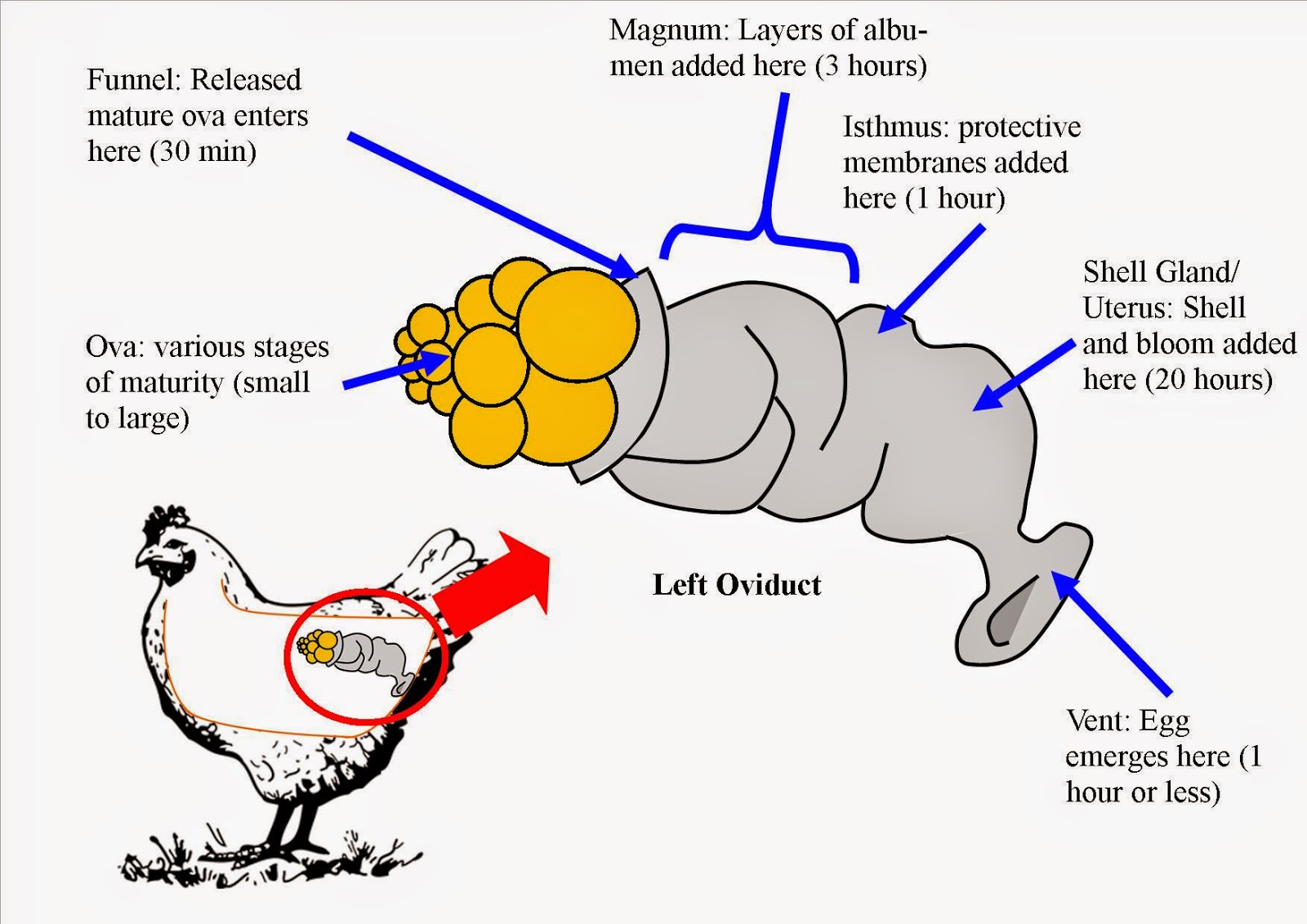
Roots 'n' Shoots The C Files How to raise chickens Layers & Nest
By Chicken Fans Editorial Team 26 August, 2022. The chicken's digestive system consists of several organs working together to break down food. A basic understanding helps to recognize everyday situations, like a bulging crop or brown cecal droppings. It also helps to identify unusual conditions and to understand how several diseases affect.

The Fresh Internal Organs Of Chicken Stock Photo Image of healthy
The endrocrine system is made up of a number of organs and major glands located throughout the bird. These glands and organs produce a special chemical messenger called a "hormone.". Through the transport system of the chicken, the compound travels to a specific area to perform its task. [optin-monster-shortcode id.
Question about chicken organs found in bird? (See photos included
Chicken Anatomy of Bone, Legs, and Wings. Bird bones are composed mainly of calcium and phosphorus and a fine web of collagen fibers that are bound tightly together. The skeleton provides support and protection, much as the human skeleton does. 99% of calcium and 80% of phosphorus are stored in the bones.

Infographic Chicken Organs Hobby Farms
The anatomy of chickens is quite similar to the human anatomy in several ways, but totally different in others. Basic functions of locomotion, eating, vocalization and sexual reproduction are all similar but do have certain adaptations and differences to make it all work. We can use the chicken eye as an example.
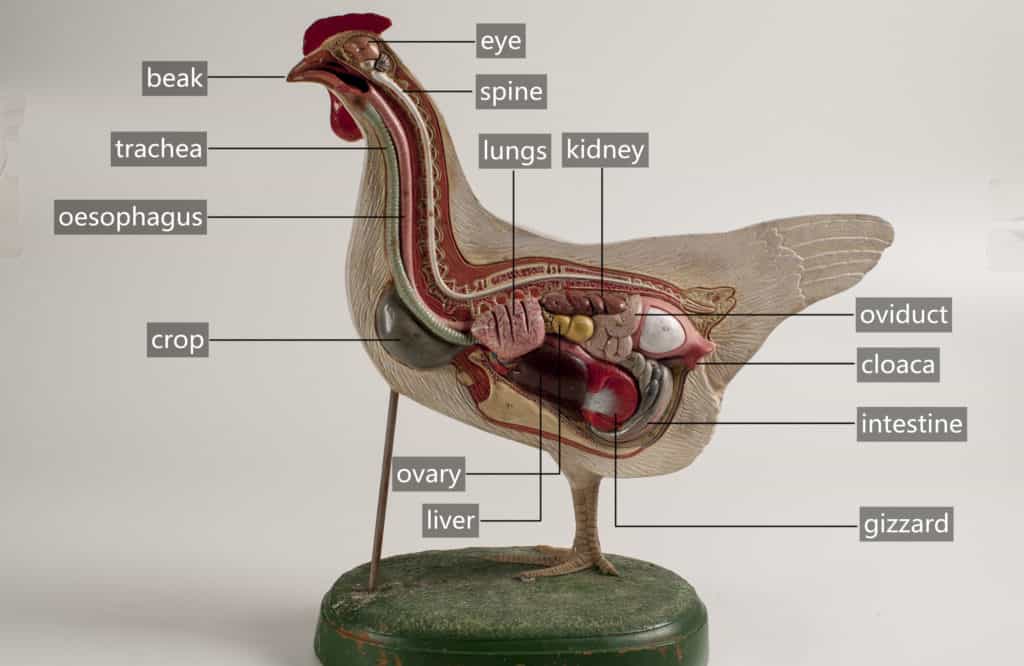
Chicken Anatomy 101 A Beginner's Guide to Understanding Your Flock
The esophagus is a muscular tube that connects the mouth to the crop. The crop is an organ in the chicken's digestive system that acts as a storage compartment for food. Digestion starts when the chicken swallows food, which then passes down the esophagus and into the crop. The crop is like a storage chamber, where food can sit and soften.

Digestive system Poultry Hub
The chicken's liver is a unique organ with a remarkable capacity for regeneration. In just a few weeks, the liver of a chicken may repair up to 70% of its mass. It is one of the animal kingdom's organs with the quickest regeneration rates. The liver may perform an astonishing variety of metabolic functions.
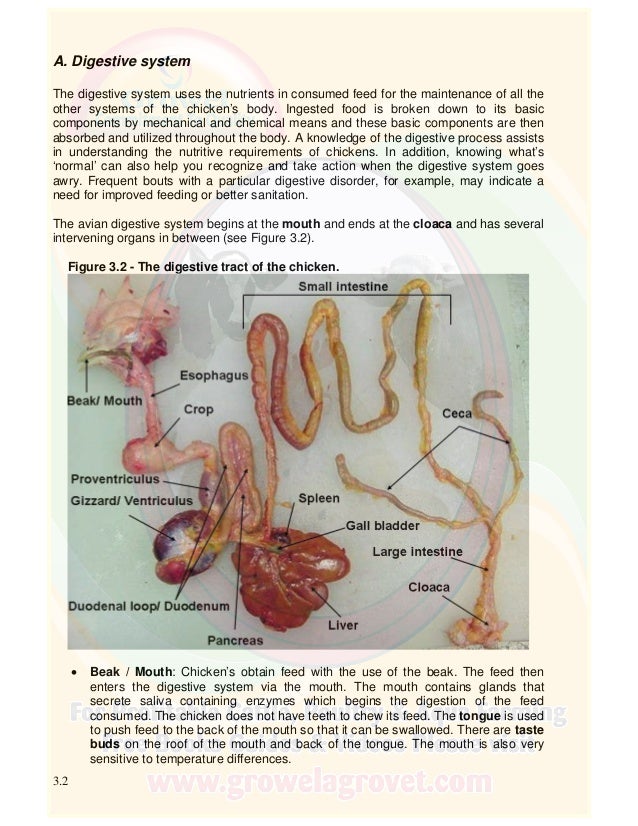
Chicken Anatomy & Physiology
The neck contains several important muscles and bones that allow the chicken to move its head around. Beneath the skin of the neck are blood vessels that carry oxygen-rich blood from the heart to the rest of the body. The torso houses most of the chicken's internal organs including the heart, lungs, digestive system, and reproductive system.
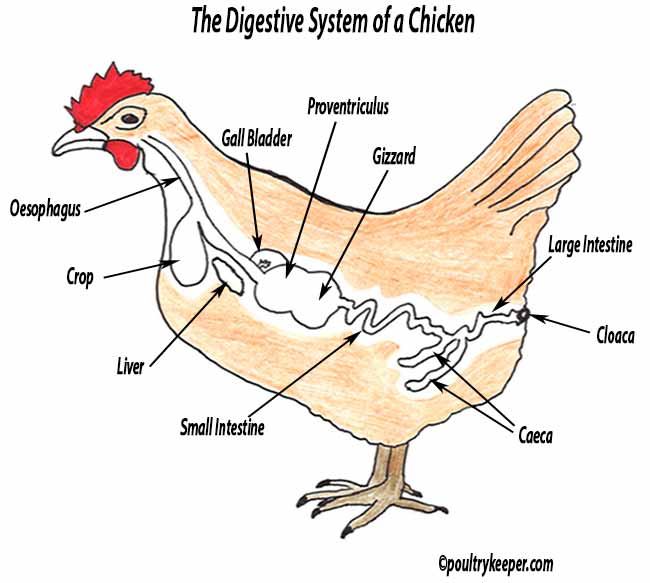
The Digestive System of a Chicken
Organs of the chicken digestive system Okay, first, start with the organs of the chicken digestive system. You will find the following different organs in the chicken digestive system. Please use the chicken digestive system labeled diagram and find out all the organs from the actual sample. Mouth cavity (tongue and beak) Pharynx of chicken

Making Sense Of Your Chickens Digestive Health
Infographic: Chicken Organs Get an inside look at your chicken's anatomy to understand what keeps it pecking around the barnyard. by Dani Yokhna. Whether you raise chickens for meat, for eggs or simply as pets, having an understanding of how your chicken's bodily systems function will make you a better chicken keeper overall. There's a.

Animal science The digestive tract of a chicken
Chicken organs have varying nutritional profiles. The liver is rich in vitamin A, iron, and copper, making it a nutrient-dense organ. Heart contains high levels of iron, zinc, and B vitamins, promoting red blood cell formation and energy metabolism. Gizzards are a good source of protein and contain a moderate amount of iron and zinc.